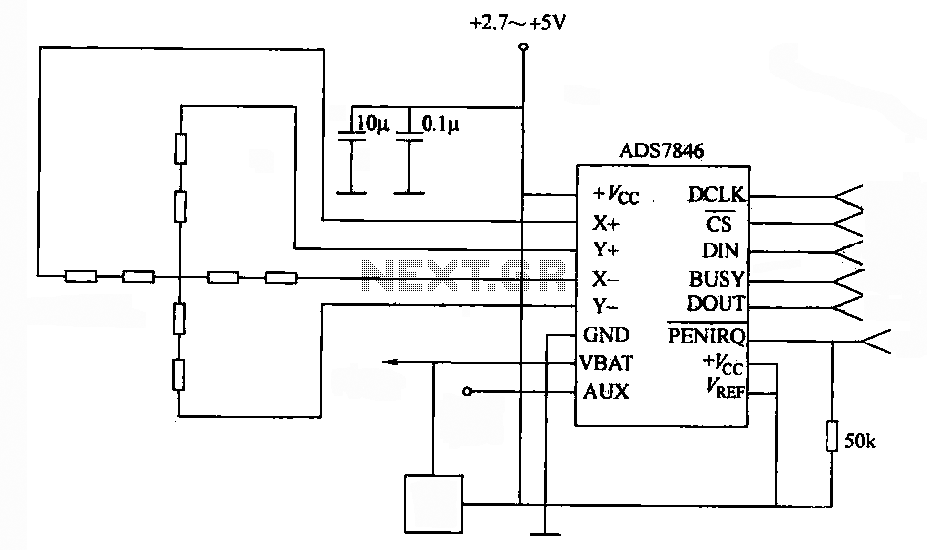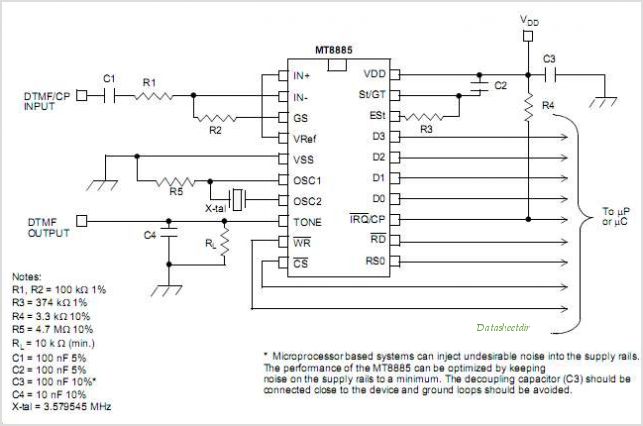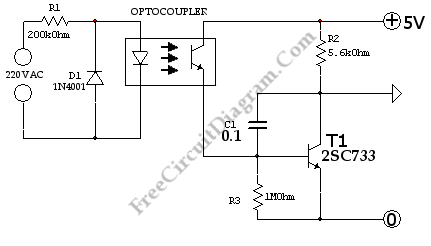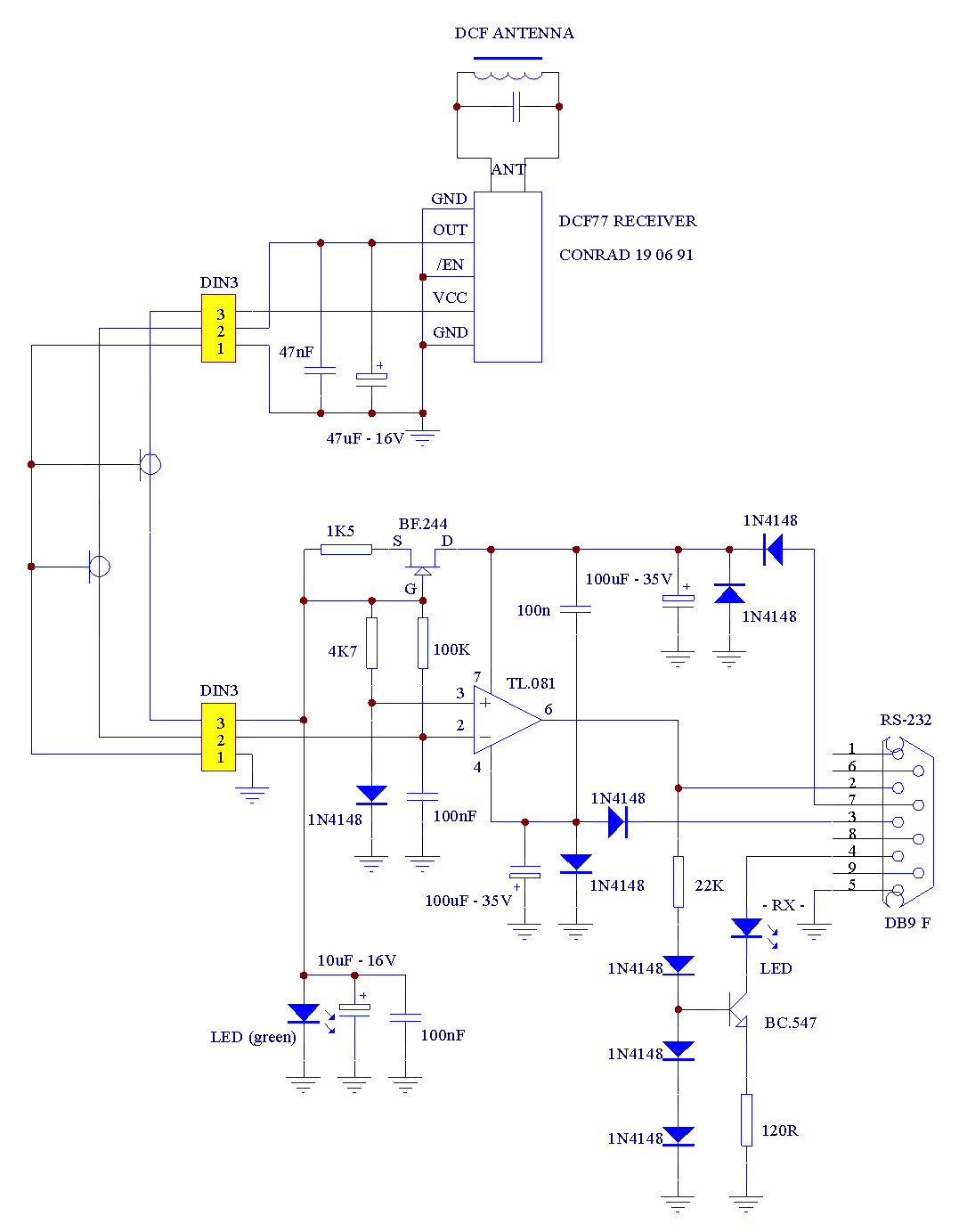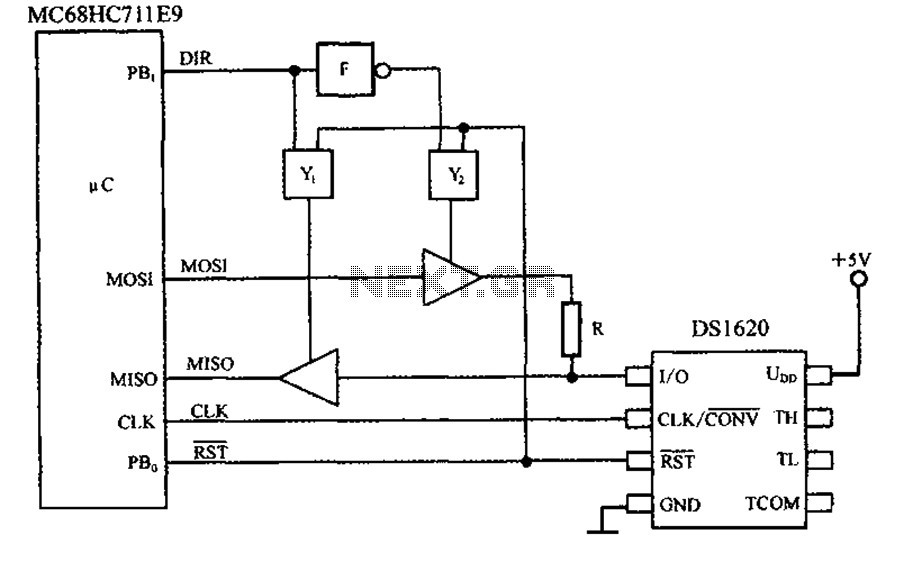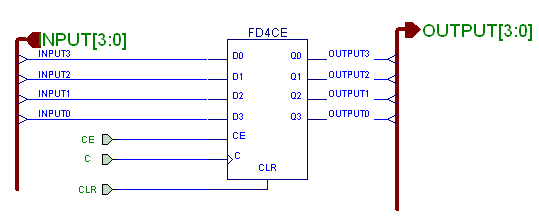
8-bit bus interface
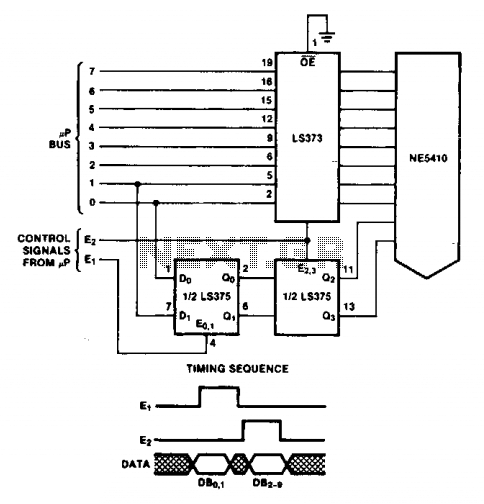
The double latch technique ensures that valid data is latched to the Digital-to-Analog Converter (DAC) until it is updated by the E2 pulse. The timing of this process will depend on the specific processor utilized.
The double latch technique is a critical method in digital signal processing, particularly in applications involving Digital-to-Analog Converters (DACs). This technique allows for stable and reliable data transfer to the DAC, ensuring that the output signal remains consistent until a new data set is provided. The process begins with the valid data being captured by the first latch, which holds the data steady while the second latch is updated with new information.
The timing of the latching process is essential and is influenced by the specifications of the processor being used. Different processors may have varying clock speeds, pulse widths, and timing requirements, which can affect how quickly the DAC can respond to new data inputs. Therefore, it is crucial to synchronize the timing of the E2 pulse with the processor's clock cycle to ensure that the data is latched correctly without introducing errors or glitches in the output signal.
In practical applications, the implementation of the double latch technique requires careful consideration of the circuit design. This includes selecting appropriate components such as flip-flops for the latches, ensuring they can handle the required data rates, and designing the timing circuitry to generate the E2 pulse accurately. Additionally, the layout of the circuit must minimize signal degradation due to noise or interference, which can impact the performance of the DAC.
Overall, the double latch technique serves as an effective means of managing data flow to a DAC, providing a foundation for high-fidelity signal generation in various electronic systems.With this double latch technique, valid data will be latched to the DAC until updated with the E2 pulse. Timing will depend on the processor used. 🔗 External reference
The double latch technique is a critical method in digital signal processing, particularly in applications involving Digital-to-Analog Converters (DACs). This technique allows for stable and reliable data transfer to the DAC, ensuring that the output signal remains consistent until a new data set is provided. The process begins with the valid data being captured by the first latch, which holds the data steady while the second latch is updated with new information.
The timing of the latching process is essential and is influenced by the specifications of the processor being used. Different processors may have varying clock speeds, pulse widths, and timing requirements, which can affect how quickly the DAC can respond to new data inputs. Therefore, it is crucial to synchronize the timing of the E2 pulse with the processor's clock cycle to ensure that the data is latched correctly without introducing errors or glitches in the output signal.
In practical applications, the implementation of the double latch technique requires careful consideration of the circuit design. This includes selecting appropriate components such as flip-flops for the latches, ensuring they can handle the required data rates, and designing the timing circuitry to generate the E2 pulse accurately. Additionally, the layout of the circuit must minimize signal degradation due to noise or interference, which can impact the performance of the DAC.
Overall, the double latch technique serves as an effective means of managing data flow to a DAC, providing a foundation for high-fidelity signal generation in various electronic systems.With this double latch technique, valid data will be latched to the DAC until updated with the E2 pulse. Timing will depend on the processor used. 🔗 External reference
